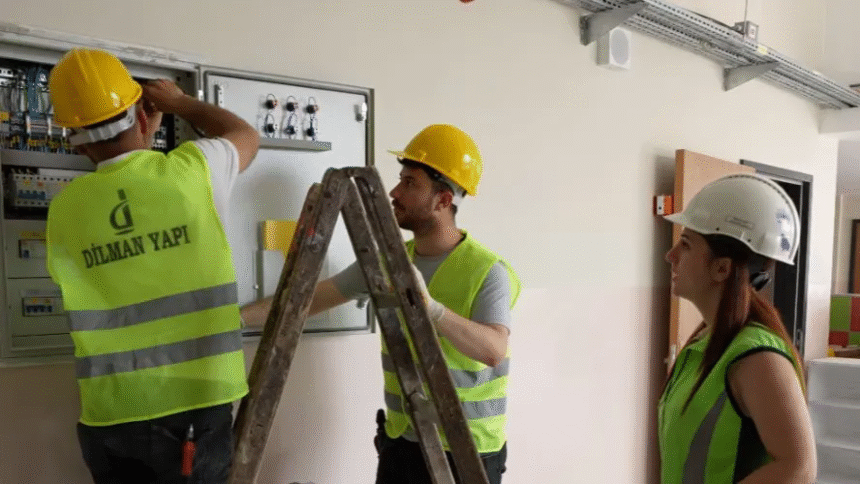As winter approaches and the UK braces for another costly heating season, new research reveals a surprising truth — larger modern homes may be wasting more energy than older, smaller properties.
While bigger homes tend to feature double glazing, insulation, and modern boilers, their sheer size and layout mean many families pay significantly more than necessary to stay warm.
Energy analysts say the gap between what homeowners think is “efficient” and how they actually use energy is now one of the biggest hidden costs on UK bills.
Size matters — and not in the way most expect
According to the Energy Saving Trust, detached houses typically use around 25,000 kWh of gas and 4,500 kWh of electricity each year — nearly double the consumption of a mid-terrace property.
Even if both homes achieve the same Energy Performance Certificate (EPC) rating, the larger house still incurs higher running costs simply because there’s more air to heat and more space for energy to escape.
This means that families in bigger properties could be paying £700 to £1,000 more annually than those in smaller homes — even when using similar heating technology.
Why modern homes aren’t always efficient in practice
Many newer homes come fitted with efficient systems like combi boilers, LED lighting, and smart thermostats. However, research from Ofgem and BEIS shows that energy waste often arises from how these systems are used rather than what equipment is installed.
Heating all rooms to the same temperature, overusing underfloor heating, or leaving unused spaces permanently warm can add hundreds to an annual bill.
Larger properties with multiple bathrooms, conservatories, or open-plan areas are especially vulnerable to “comfort creep” — a tendency to heat and light spaces unnecessarily out of convenience.
The layout trap: when efficiency upgrades backfire
Homeowners who’ve invested heavily in insulation and modern heating often assume their running costs should automatically fall. Yet in detached or semi-detached homes, insulation can create a “false comfort zone” where families feel less pressure to moderate their usage.
Thermal imaging surveys show that bigger houses frequently lose heat through poorly insulated extensions, garages, or attic conversions. Because the overall volume of air is higher, any inefficiency in heating control has a magnified cost effect.
Experts advise zoning heating systems — separating upstairs and downstairs thermostats — and using smart radiator valves to control individual room temperatures.
The cost divide across housing types
Ofgem’s latest price cap data shows the typical annual dual fuel bill stands at £1,755, based on medium usage. However, detached homes frequently exceed this figure by 30% to 40%.
| Property Type | Typical Gas Use (kWh) | Typical Electricity Use (kWh) | Annual Bill Estimate* |
| Flat / Apartment | 8,000 | 2,000 | £1,000 |
| Mid-Terrace | 12,000 | 2,800 | £1,400 |
| Semi-Detached | 17,000 | 3,800 | £1,700 |
| Detached | 25,000 | 4,500 | £2,200 |
*Based on Ofgem October–December 2025 price cap rates.
The difference of over £1,000 a year between property types highlights why it’s vital for homeowners to assess not just their insulation or heating system, but their tariff structure too.
A quick dual fuel energy comparison can often identify better-suited plans for high-usage households.
The hidden inefficiencies of “smart” homes
Ironically, many tech-filled properties suffer higher standby losses from always-on smart devices and heating controllers. Multiple connected thermostats, voice assistants, and smart plugs all consume small amounts of electricity even when idle.
Over a full year, these can quietly add £50–£100 to a bill. In large houses, the combined load of smart lighting and connected appliances can be even higher.
While technology improves comfort, it can also create complacency. Experts recommend periodically checking energy monitoring dashboards or using energy saving comparison tools to see whether the gains from efficiency tech outweigh the added standby load.
How larger households can reduce waste
Simple behavioural and scheduling changes can make a measurable difference:
- Heat only occupied rooms and close doors to retain warmth.
- Lower the thermostat by 1°C to save around £130 a year.
- Use smart valves to avoid overheating bedrooms or unused spaces.
- Schedule hot water heating based on actual use, not round-the-clock availability.
Even in larger homes, reducing daily gas usage by just 10% can translate into a saving of £175 or more under the current cap.
Why tariff choice matters more than ever
With prices still far above pre-crisis levels, larger homes have the most to gain from switching to competitive tariffs. Fixed-rate dual fuel plans can stabilise costs for high-usage households, while flexible tariffs can benefit those using smart controls to shift demand to off-peak hours.
Using Free Price Compare, homeowners can assess whether their current deal suits their actual consumption pattern or if a cheaper alternative exists. Regular reviews — especially before winter — help prevent being trapped on outdated default rates.
The bottom line
The UK’s largest homes are not necessarily the most energy-savvy. In many cases, their sheer size and usage habits outweigh even the best efficiency technology.
By pairing smarter controls with energy saving comparison tools and regular energy tariff reviews, households can rein in rising costs and ensure comfort doesn’t come at a premium.
Bigger may be better for space — but when it comes to energy efficiency, size often works against you.


